An all-embracing collection of Om writings, symbols, artwork and music collected by Dr. Nagar and Associates.
OM, the sacred monosyllabic symbol of Parambrahma Paramatman, is the pious and holy name of the Supreme Lord. It is cryptic, mighty, mystic, mysterious, sacred, sacrosanct, secret and transcendental by nature. It possesses enormous, extra-ordinary, inexplicable, immanent, spiritual power.
There is no other word in the whole world, in any of the many litertures of the entire universe, which is so infinitesimal in character, and yet is full of such infinite meanings as is the universal OM. It is most intensive in form and still extremely extensive in content. It is infinitely minute in appearrance, nonetheless immensely colossal in its all-pervasiveness. It is honored and worshipped by so many cultures and traditions, ancient as well as modern around the globe. Here we see the changes within the OM symbol through out history.
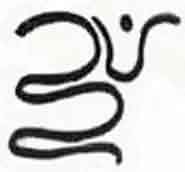
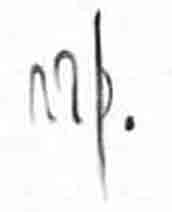
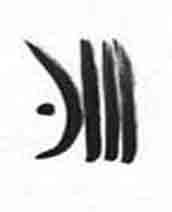
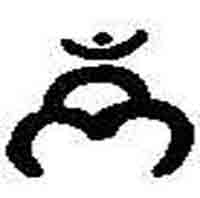
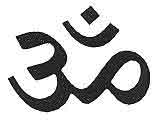
This syllable OM is indeed Brahman. This syllable is the highest. Whosoever knows this syllable obtains all that he desires. This is the best support. This is the highest support. Whosoever knows this support is adored in the world of Brahma.
Kathopanishad. I. ii. 16-17




The symbol OM
The symbol OM has meaning for both Hindus and Christians. Hinduism is a religion of symbols. A good Hindu description is found in Swami Vivekananda, Selections from Swami Vivekananda, Advaiba Ashvama, Calcutta, India, 1981." A symbol is the manifestation of the thing signified, and if the thing signified has already an existence, and if by experience, we know that the symbol has expressed that thing many times, then we are sure that there is good relation between them. There must be natural a connection between the symbol and the thing signified: then, when that symbol is pronounced, it recalls the thing signified. So the word and thought are inseparable. In Hinduism, God is an idea, God is connected with hundreds of words and each one stands as a symbol for God.
A Tamil version written by a Christian: OM (AUM) is a sound, "a material sound of which all other sounds must be manifestations", one of which is the most natural sound: the basis of all sounds. The word "sound" is an inappropriate word for the original word "Nalham". The word Nalham is a sound but the original word denotes the following: the wind is connected with Him. So it means "The manifesting word of God is OM". So Christians in India, see the similarity in the Bible with John 1:1, "In the beginning was the Word and the Word was with God and the Word was God. Because the word OM has a definite Hindu connotation, it is still not recognised by Christian in India. Some of these same Christians say Aum (OM) the letter "A" in Tamil means Creator, "U" means Redeemer, and "M" is completion of salvation. So it is a very ancient word with no known exact significance of the word. The sounds A...U...M... is an explanation that the Creator Himself comes as a redeemer and saves souls to make them His own.
Other Faiths have a holy word like this OM, it may be a little different or perhaps modified. To the Christians, it is Amen. To the Muslims it is Amin, although their interpretations may not be identical with that of OM.
Components of OM
OM is the beginning of all the world of sound (words) and is the basis of phonetics. The mind, just like a mudra (dollar), has four quarters. These four quarters are the parts of a coin, like the silver dollar coin. The Atman is partless.
View the 4 quarters of OM
The first quarter is the first state, i.e. waking state or impure consciousness. It percieves the physical world around us.
The second quarter is the second state, which represents the dream state. Here the first quarter merges into the second quarter and becomes half dollar.
The third quarter or three states are the sound form and have a common feature --absence of the knowledge of the Reality. They belong to the cosmic world.
Now the mind leaves the cosmic world and all its mass of ideas melts away. The mind becomes pure and is able to concentrate and meditate with full concentration. Here the mind enters into the fourth state of Turiya which is silence and no sound. Thus makes mudra the whole.
Thus Atma becomes pure consciousness. Gradually the mind starts the state of samadhi, which is pure consciousness, the Brahman. This is silence and the Atman sees Chidakasha, endless space, which is shown here by blue color, wherein Atman sees Paramatman, the ParaBrahman.
Sound of OM
OM is the beginning of all the world of sound (words) and is the basis of phonetics. All sounds and words have their origin in Pranava Sabda. All the sounds that can be produced or uttered by a combination of different letters or alphabet come under the range of three sounds produced by A, U, M. As in the example of Devanagri Script, the letters Ka, Kha, Ga, Gha, emerge from the throat. The letters, Cha, Chha, Ja, Jha are mainly from the palate. The letters, Ta, Tha, Da, Dha originate from the tip of the tongue and the letters, Pa, Pha, Ba, Bha, Ma are formed by the meeting of the lips. Since the Pranava Sabda contains all the breath sounds, it is said that OM is the sum and substance of the Vedas. All names are contained within the Pranava and so it is the basis of all the different forms of worship and all the different names by which God is adored.
OM must be chanted as slowly as possible. "A" emerging from the throat (originating in the regions of the navel), "U" rolling over the tongue in crescendo until the sound reaches the peak, and end in "M" at the lips, descending as slowly as it rose, taking as much time as it took to ascend. The Amatra OM must gradually merge into the silence reverberating in the cavity of the heart. All forms of God respond when OM is chanted, it is said to be the direct line of communication with God. It is the key that unlocks for us the doorway to the house of the Lord. As we chant OM from the depth of our being, it elevates and lifts our consciousness to a higher realm and leads us to the supreme state of consciousness.
OM represents all the states of consciousness, the physical as well as the spiritual, and our awareness from the physical to the transcendental (divine) state. There are three states of consciousness, waking or Jagrat, dreaming or Swapna, and deep sleep known as Sushupti. There is a super-conscious transcendental state called Turiyavasta, it is the highest state of consciousness experienced by Yogis. Once again, the "A" in Omkara represents the waking state (and our gross body), the "U" represents the dream state (and our subtle body), and the "M" represents the deep sleep state (and our casual body). But when the OM is pronounced, there is the tailing silence, the Asabda, soundless state where the same sound of OM rings without being aloud, vibrating in our ears even when our lips our closed. This letterless resonance, the rich humming sound of silence, represented by what is called the Amatra OM is said to signify the Self or the Atma, which is transcendental to the three states of consciousness. It is deeper and beyond the three bodies, gross, subtle, and casual. It is the core, the essence, the reality of our being. It is the foundation of our very being.






Om Shanti Mandiram